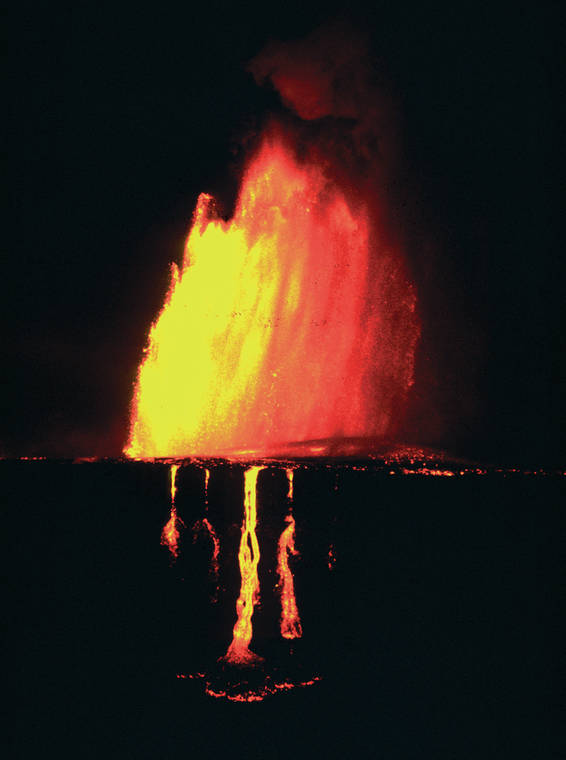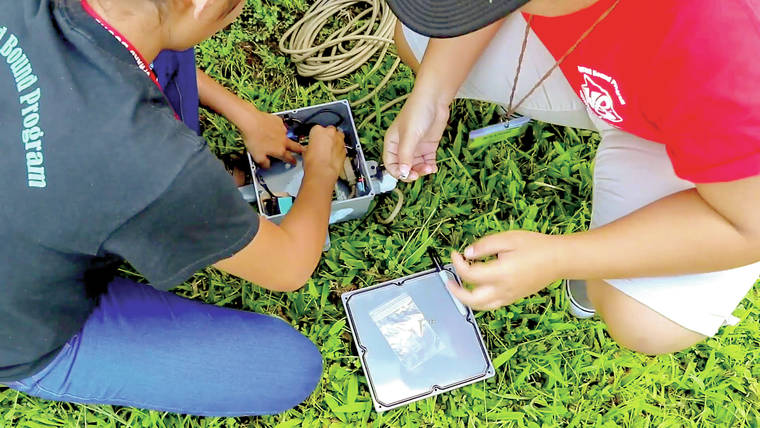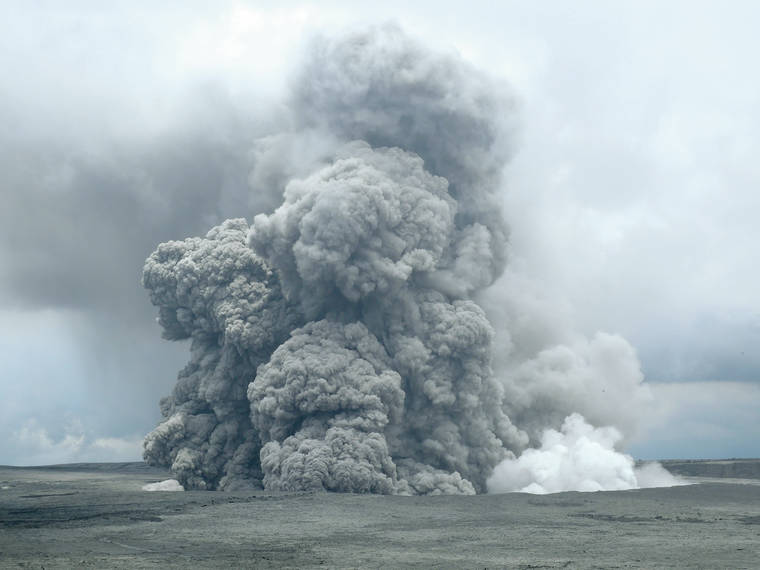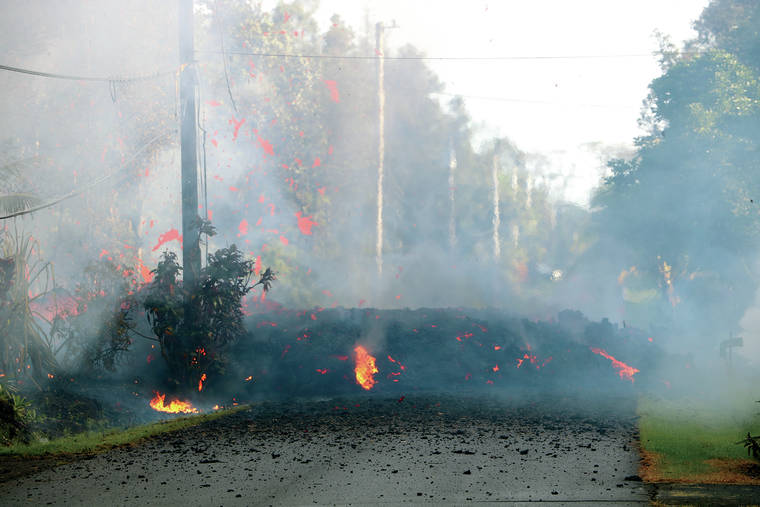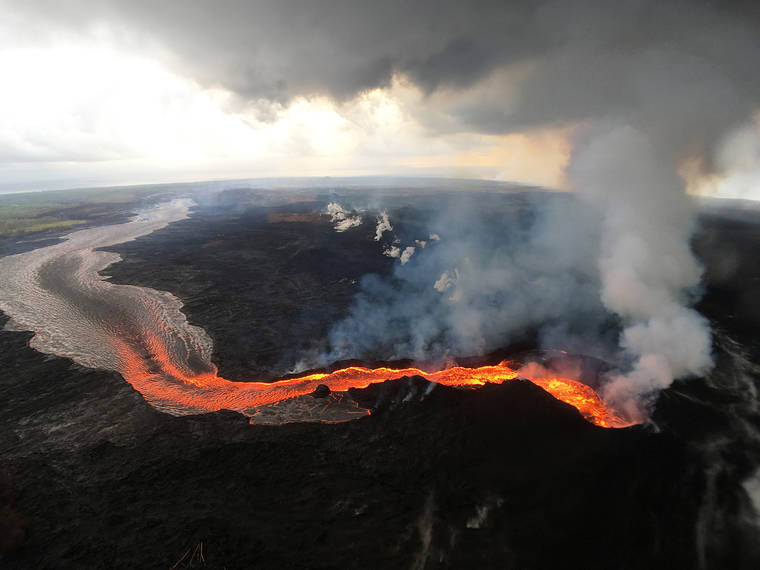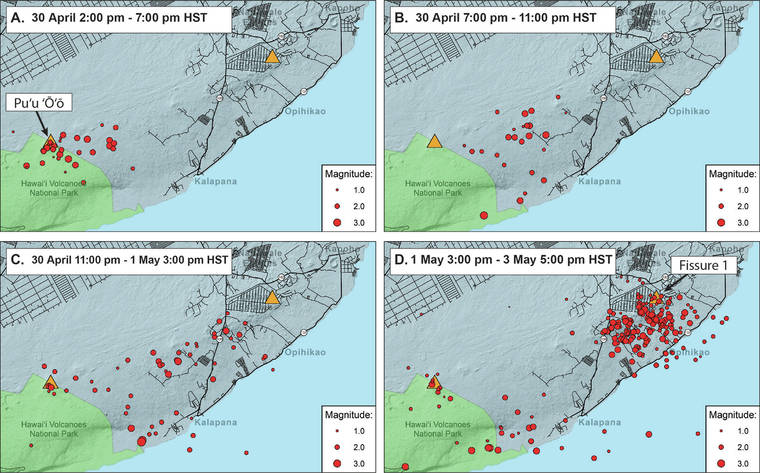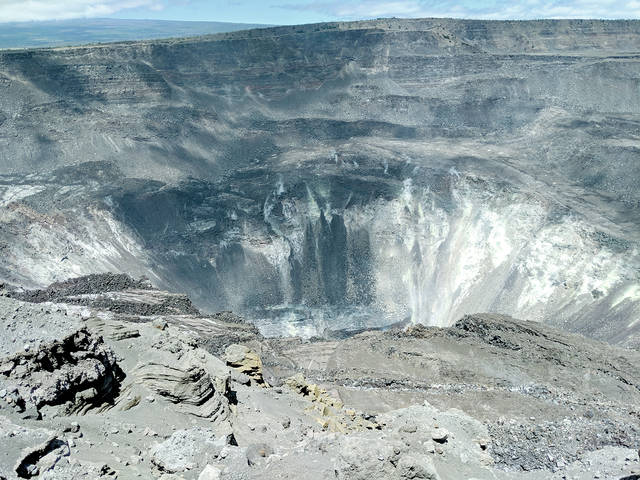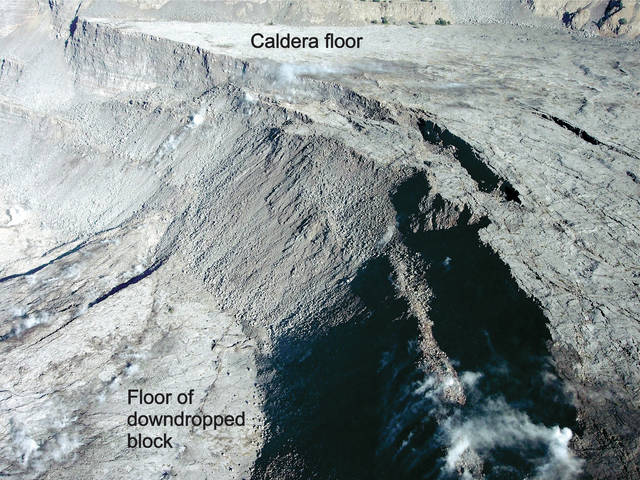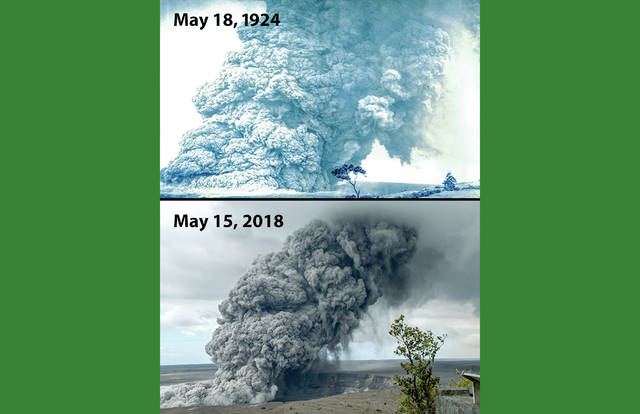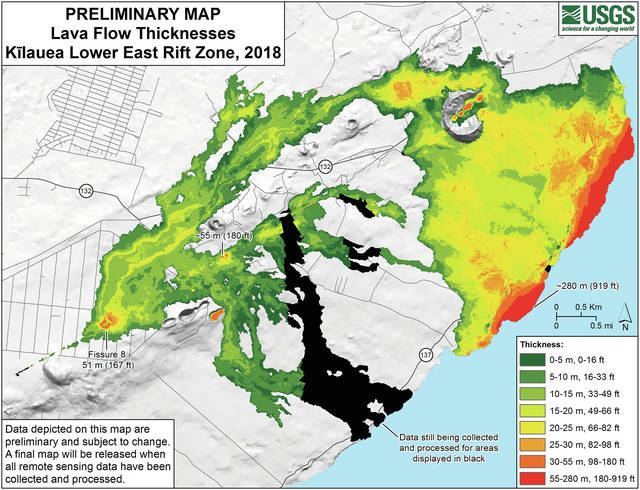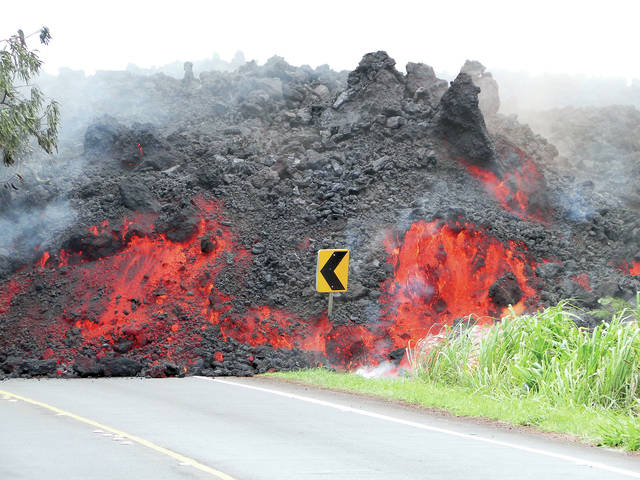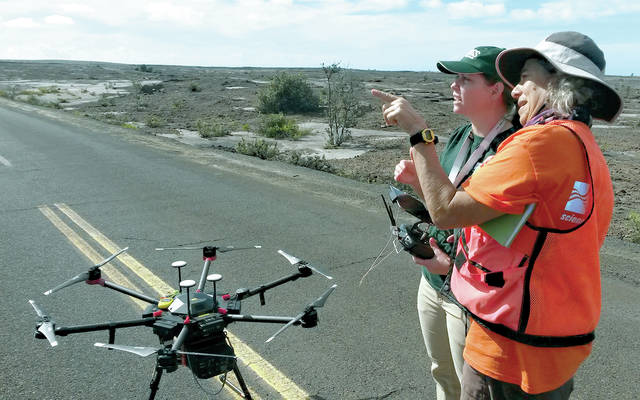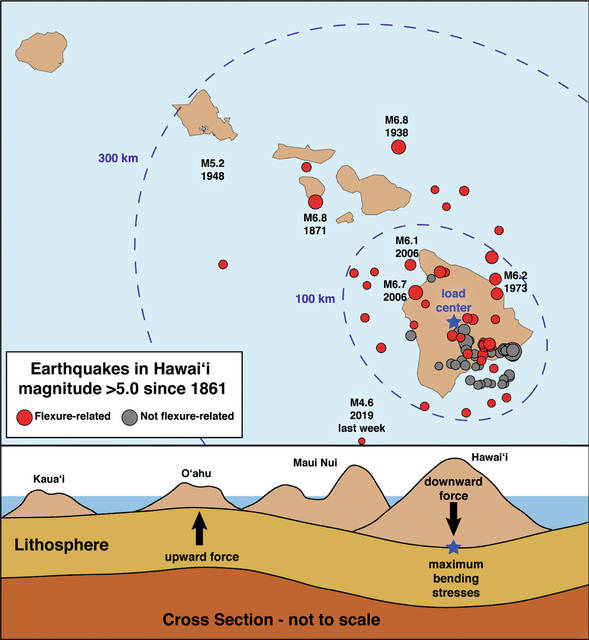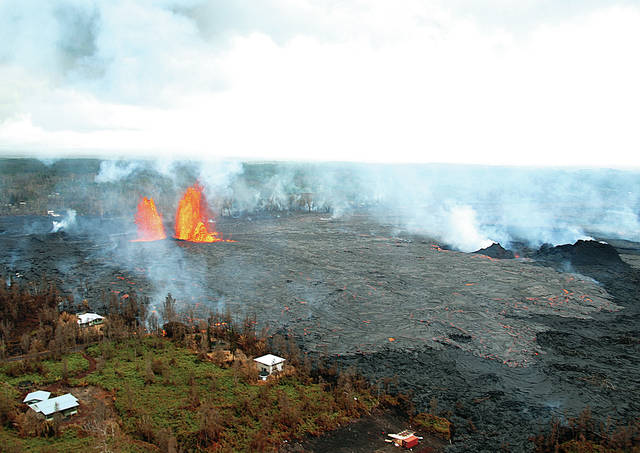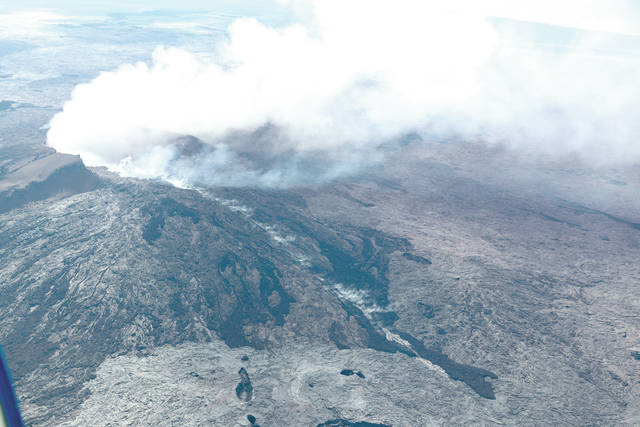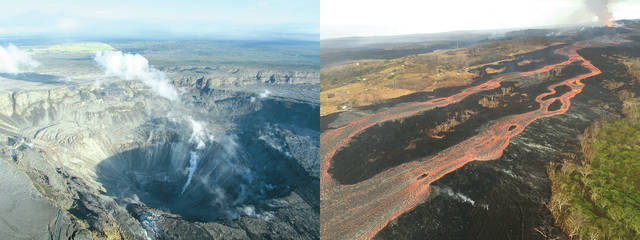Volcano Watch: New eyes in the sky for monitoring Hawaiian volcanoes
The Hawaiian Volcano Observatory is no rookie when it comes to using flight to assist with monitoring Hawaiian volcanoes.
Volcano Watch: USGS to survey Kilauea from summit to Kumukahi
Since the end of 2018’s volcanic activity, USGS Hawaiian Volcano Observatory scientists have wanted to resurvey Kilauea Volcano’s ground surface to document changes brought about by the Puna eruption and summit collapse. Doing so would allow us to more accurately answer questions about the total volumes of erupted lava and summit subsidence that occurred last summer.
Volcano Watch: 2019 marks 50th anniversary of Mauna Ulu eruption
May 24 is a notable date in Kilauea Volcano’s history.
Volcano Watch: Students use science for the benefit of their communities
During the 2018 eruption of Kilauea Volcano, when fissures erupted and lava flowed in the lower East Rift Zone, many Puna residents were displaced from their homes. We, as a community, watched from the sidelines as the eruption went on, helpless in averting the course of nature.
Volcano Watch: New insights gained from Kilauea Volcano’s 2018 summit collapses
A year ago, USGS Hawaiian Volcano Observatory scientists and Island of Hawaii residents were in the throes of a historically unprecedented series of events for Kilauea.
HVO geologists recall their first day of the 2018 lower East Rift Zone eruption
With the one-year anniversary of the onset of Kilauea Volcano’s 2018 lower East Rift Zone eruption upon us, USGS Hawaiian Volcano Observatory staff, like many Hawaii residents, are reflecting on this historic event.
Volcano Watch: What we’ve learned from Kilauea’s 2018 lower East Rift Zone eruption
May 3, 2019, marks the one year anniversary of the start of Kilauea Volcano’s 2018 lower East Rift Zone eruption.
What caused — or did not cause — the 2018 Kilauea eruption?
When a major geologic event occurs, scientists who study such events and the people directly or indirectly impacted by it seek to understand its cause.
Volcano Watch: Eruption pause provides opportunity to probe volcanic pollution
The end of Kilauea’s 2018 eruption this past September was accompanied by an enormous decrease in the amount of sulfur dioxide gas (SO2) emitted from the volcano. This led to beautifully clear skies gracing the Island of Hawaii, particularly noticeable on the west side, where the volcanic pollution known as vog chronically collected in past years.
Volcano Watch: New outcrops make good geology
A good field geologist is an opportunist.
Volcano Watch: Did groundwater trigger explosive eruptions at Kilauea?
In February 1924, the surface of the lava lake at Halemaumau dropped rapidly and disappeared from view.
Volcano Watch: How is lava flow thickness measured and why does it matter?
Eruption rate (how much lava comes out of the ground per unit time) is probably the best measure of volcanic activity, and the first step in that calculation is to measure lava flow thickness and area.
How do lava flows cool and how long does it take?
Since the end of the 2018 lower East Rift Zone eruption on Kilauea Volcano, questions surfaced concerning how long it will take for the new lava flows to solidify. This is a difficult question to answer because the initial eruptive temperatures — along with many different factors — can influence the rate of cooling.
Volcano Watch: Low sulfur emissions mean a new focus on a different volcanic gas
With the end of Kilauea Volcano’s 2018 lower East Rift Zone eruption, the Island of Hawaii was able, at long last, to say goodbye to strong vog — volcanic smog produced by voluminous sulfur dioxide emissions.
Volcano Watch: Why do some Hawaii earthquakes occur so far offshore?
Earthquakes in Hawaii are intimately related to the volcanoes. In addition to helping scientists track moving magma, sometimes they happen simply because the earth under the island chain gets bent out of shape.
Volcano Watch: Geology of the past — how long will the eruption last?
The 2018 lower East Rift Zone eruption of Kilauea brought an end to the 35-plus-year eruption at Pu‘u ‘O‘o. With the draining of the summit and the collapse of Pu‘u ‘O‘o, Puna residents were concerned that the eruption in the LERZ could be long-lived.
Volcano Watch: 7 months of no lava at Pu‘u ‘O‘o heralds end of an era
One of the most frequent questions asked of U.S. Geological Survey Hawaiian Volcano Observatory scientists during the past several months has been, “Is the lower East Rift eruption over?”
Volcano Watch suspended because of federal government shutdown
During the federal government shutdown, the weekly Volcano Watch column is suspended.
Volcano Watch: A field trip to the Mountain of Water
The field day begins with a summit weather check at first light. It is a reflective moment at 6:15 a.m. atop Kilauea Volcano, and the fumarole cracks are steaming like the coffee from my thermos. The weather at Halema‘uma‘u crater is cool and dry, with light trade winds from the northeast.
Volcano Watch: January is Volcano Awareness Month
January 2019 marks the 10th annual Volcano Awareness Month on the Island of Hawaii.



